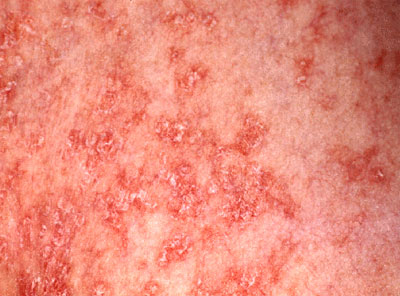|
|
|
Graft-versus-host disease
Graft-versus-host disease (GVHD) is becoming increasingly common in dermatology practice. GVHD occurs secondary to homologous bone marrow transplantation, where the engrafted tissue recognizes the host as foreign, and begins to react against it.
Acute GVHD is manifested by a fever and generalized erythematous skin changes. The erythema typically shows a morbilliform pattern, and can progress to changes consistent with toxic epidermal necrolysis, i.e. a generalized exfoliation.
Chronic GVHD is common and shows skin changes that indicate the lichenoid histologic eruption that is present. A reticulate pattern of pigment incontinence is common. In addition to changes consistent with lichen planus, cutaneous sclerosis eventually develops.
There may be an associated alopecia.
Treatment:
Prevention of acute graft versus host:
- Cyclosporine and methotrexate
- Tacrolimus and methotrexate
Acute Graft versus Host:
- Supportive Care
- Prednisone at 2mg. per kg. which may be combined with cyclosporine
- The addition of anti-thymocyte globulin may be of value
- Refractory cases may be helped by monoclonal antibodies to cytokines and cytokine receptors.
Chronic Graft versus Host:
- Lichenoid – this can be helped by topical corticosteroids, systemic steroids and cyclosporine
- Tacrolimus and mycophenolate mofetil may also be of value
- PUVA has also been utilized

Back to Dermatology Glossary - G Index |
Back to Dermatology Glossary Index
|